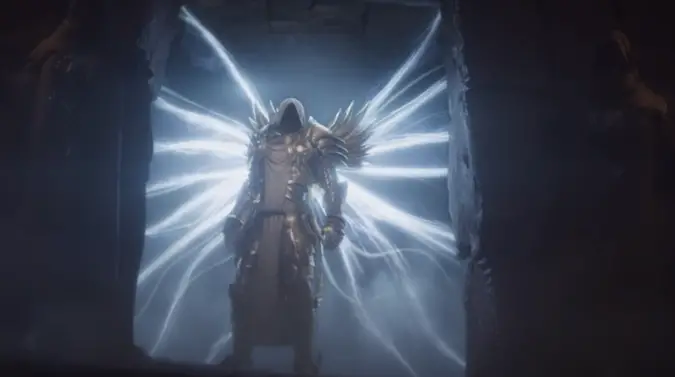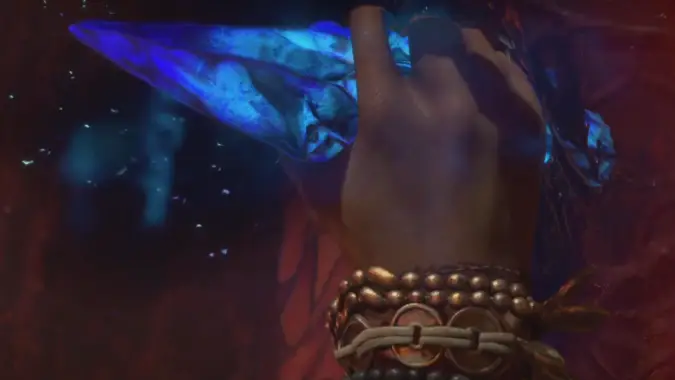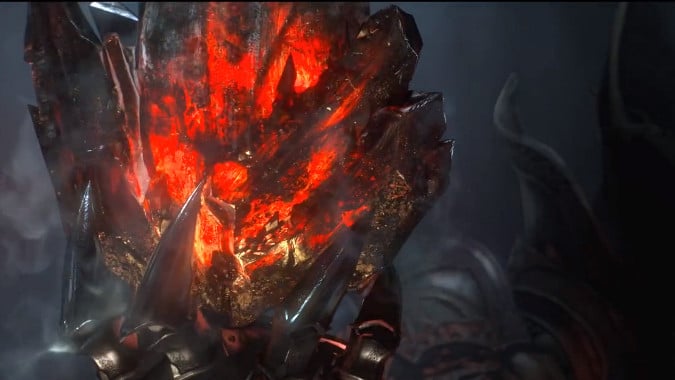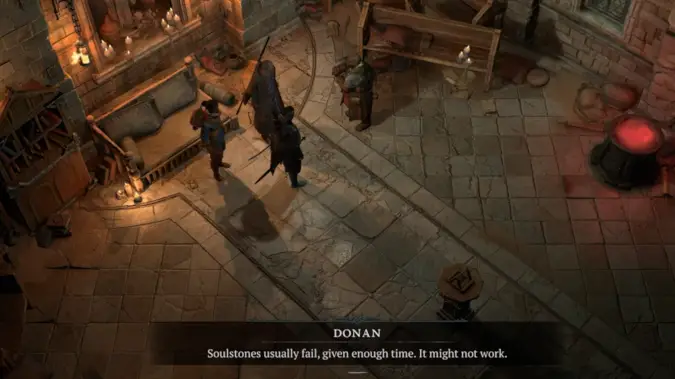What exactly is a Soulstone, and why do the Horadrim keep using them?

The Horadrim– the order of mages dedicated to stopping demons from invading Sanctuary — have many weapons to fight the forces of evil, but only one to stop them: the Soulstone.
Throughout the Diablo franchise, from the first game up until Diablo 4, the constant presence of Soulstones has been one of the defining characteristics. The events of the original Diablo are tied up in the discovery of the Soulstone containing the essence of Diablo, Lord of Terror, and in Diablo 2 we spend a great deal of time chasing after and attempting to acquire that Soulstone as well as the ones containing Diablo’s ‘brothers’ Mephisto and Baal. Then, in Diablo 3, the Black Soulstone of Zoltan Kulle takes center stage as it becomes the main focus for both Diablo and Malthael’s plotting And if you’ve played through Diablo 4, you know that a Soulstone features there as well. As such, we should note that spoilers for the story of Diablo 4 will follow.
But what are Soulstones? How do they work? Do they work? Their track record seems less than ideal. I mean, the entire Diablo franchise could be summed up as wizards putting demons in magic rocks that they eventually escape from. So what are Soulstones, where did they come from, and how did the ancient Horadrim end up using them against demonkind?

The Angel Tyrael taught humans about Soulstones
In this case, the credit for the idea of the Soulstone can be laid at the feet of an Angel. Tyrael, Archangel of Justice, chose to create the Horadrim because his fellows on the Angiris Council would not intervene to stop the three Greater Evils — Diablo, Baal and Mephisto. Tyrael felt it an injustice t0 allow the three demon lords to rampage across Sanctuary, as well as a tactical blunder.
So Tyrael reached out to the mortals themselves. Finding many of the greatest mages of their generation — names like Tal Rasha, Zoltan Kulle, and Jered Cain — he told them of the demon lords and how they were behind many of the ills befalling Sanctuary at that time. And he shared with them the knowledge of Soulstones — how to use pieces of the great Worldstone that had created Sanctuary to make prisons for the souls of the invading demons.
This led to the great hunting of the Greater Evils. The first to fall was Mephisto, captured by the Horadrim after a years long pursuit. Tal Rasha, then the leader of the group, chose to entrust the Soulstone to the priests of the newborn Zakarum faith, who secured it beneath the site of the future city of Travincal. It would become their holy city, connected to the Kehjistani capital of Kurast by a long causeway.
Then, after much work and many battles, the demon lord Baal was next to be cornered. But when the Horadrim attempted to use the Soulstone attuned to Baal to hold him, he managed to destroy it. Since each Soulstone had to be attuned to the target, they couldn’t just use the one intended for Diablo on Baal and then repair the broken one or find a new one. Seeing no other choice, Tal Rasha chose to use the remnants of Baal’s Soulstone to grab hold of the demon’s soul, and his own body to imprison him. The Horadrim were forced to entomb Tal Rasha underneath the sands of Lut Gholein, to forever contend with Baal’s raging spirit.

How the Soulstones became a danger to the world
Now led by Jered Cain, the remaining Horadrim spent further years hunting down Diablo, eventually tracking him to the lands that would be known as Khanduras in time. He was eventually defeated and trapped within the Soulstone. This time, Jered chose a different path — rather than trapping it underneath what would become the most bustling metropolis on Sanctuary, he chose to erect a Horadrim monastery on the site.
Of all the Horadrim, however, only one of them suspected that Tyrael hadn’t taught them everything about Soulstones. This was Zoltan Kulle. For his experimentation, Kulle found himself eventually the enemy of the Horadrim, who — upon discovering that they couldn’t kill him — dismembered him and drained his blood, storing each in ancient Vizjerai tombs.
Kulle proved right. One of the things Tyrael hadn’t mentioned was that the Soulstones weren’t limited in terms of what kinds of souls they could imprison. Angels could be trapped as easily as demons, for example. It’s possible Tyrael simply didn’t know, as the chief researcher on the Worldstone in the heavens was not him, but rather Malthael, Archangel of Wisdom, who had been the one to remove pieces of the Worldstone for use when the artifact had remained in the Pandemonium Fortress.
Regardless, Tyrael also didn’t mention — and may not have known — another fact. The Soulstones were potent, yes. They could imprison a soul for countless centuries. But with enough time, the souls of the Greater Evils could reach out beyond the Soulstones and influence the people around them. Baal’s spirit was trapped in Lut Gholien, in the center of the Aranoch wastes with only Tal Rasha to torment, and likewise Diablo’s Soulstone was buried under the Horadrim Monastery, with only a sparse few fishers and cattle farmers anywhere close to it.
But Mephisto? Mephisto’s Soulstone was buried under Travincal, the Temple City, the spiritual center of Kehjistan as the Zakarum faith grew. As hundreds of years passed, Mephisto’s influence grew and attracted people who desired power as well as enlightenment, and in those souls, Mephisto found fertile ground for hatred.

A Soulstone killed almost everyone
The events of each Diablo game in turn are based around Soulstones and their limits. Diablo tells the story of how one of Mephisto’s corrupted Zakarum — Archbishop Lazarus — came to Khanduras to find Diablo’s Soulstone and helped the demon first to take control of King Leoric and later his son Albrecht. Diablo 2 follows the events of the first game, which saw Aidan, the elder son of King Leoric, plunge the Soulstone into his own head in an attempt to contain the Evil within himself, only to succumb to corruption and become the Dark Wanderer. Thus Baal was freed, and while Diablo and Mephisto would both fall to adventurers he would seek out and corrupt the Worldstone, causing Tyrael to nearly sacrifice his own immortal existence to stop it by destroying the Worldstone itself.
Meanwhile, the witch Adria had pledged herself to Diablo’s service and sought out Kulle’s profane Black Soulstone. One way it differed from the ones Tyrael had provided was that it could be attuned to multiple souls at once. She then used it to capture the souls of each of the Evils in turn as their previous Soulstones and host bodies were destroyed. This led to the events of Diablo 3, wherein Diablo returns as the Prime Evil with the power of all the other six demon lords. Eventually, Malthael, now calling himself the Angel of Death, used that same Black Soulstone and manages to attune it to every human soul on Sanctuary. He used this to pull the demonic essence from each human in turn — since humanity on Sanctuary is descended from Angels and Demons alike, this meant half of their souls being ripped out.
This led to the deaths of 90% of all humans living at that time. While the hero of Diablo 3 managed to stop a total extinction of humanity, it did not prevent Sanctuary from facing total collapse across the entire world.

The last Horadrim, Astaroth, and the events of Diablo 4
In addition to the collapse of the world, the events around the Black Soulstone saw Tyrael renounce his immortality and become a mortal being, the last Horadrim Deckard Cain dying, and a new order being started by a now flesh and blood Tyrael with followers such as Lorath Nahr and Donan. Indeed, in this new Horadrim, it was Donan who truly took up the study of the Soulstones. By the time of Diablo 4, in fact, Donan is the single greatest expert on Soulstones alive.
And it is Donan who tells a truth long displayed but rarely commented on in the games: Soulstones aren’t actually a solution. He specifically refers of his use years earlier of a Soulstone to imprison Astaroth — a powerful demon servant of Mephisto who was rampaging across Scosglen slaughtering the Druids and anyone else standing against him — as a last resort. He even tells Lorath that Soulstones usually fail, given enough time.
As we’ve seen — the failure of Mephisto’s Soulstone allowed the demon lord to control and rule over the whole of the Zakarum faith, infesting the body of the Que-Hagan of the faith himself. This is in part due to their origin — the power of the Worldstone is linked directly to that of Anu, the ancient being who all Angels and Demons (and thus, humans) are descended from. Faith, belief — these help shape their awesome power. And demons have enormous belief in themselves, their own superiority and their eventual victory, which in turn might well reduce the Soulstone’s ability to hold them.
In the end, the Soulstones are an imperfect solution at best. They provide the Horadrim with a temporary way to prevent entities like Mephisto or Astaroth from returning after a defeat, but they can’t just be left lying around afterwards — the power of the demon within such a stone will always leak out to influence others. They’re a weapon of last resort because all they can really do is kick the can down the road — but when the alternative is to leave the can there burning everyone to death, a few centuries to try and come up with a true solution is better than nothing. The Horadrim keep using the Soulstones because — aside from costly battles that usually kill everyone involved, or the occasional hero who can somehow triumph against even a being like Diablo — the Soulstones are basically the only weapon they have.
Please consider supporting our Patreon!
Join the Discussion
Blizzard Watch is a safe space for all readers. By leaving comments on this site you agree to follow our commenting and community guidelines.
 @MatthewWRossi
@MatthewWRossi



